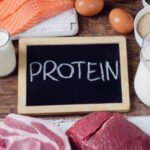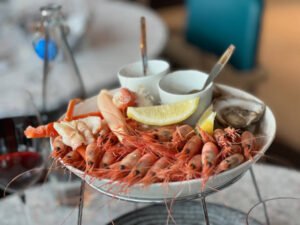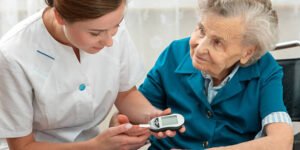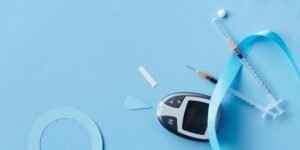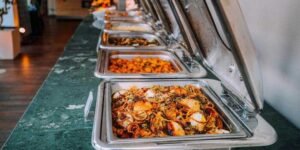
If You Already Use Medicine to Control Diabetes, Why Do You Need to Control It With Diet?
First understand the journey of sugar in the body
Glucose in the blood is referred to as “blood sugar”. Glucose is an important nutrient for the body. It is transported to every corner of the body with the blood and provides most of the body’s caloric needs for activities throughout the day. In addition to actions controlled by consciousness, such as walking, waving hands, exercising, lifting objects, etc., human activities that cannot be controlled by consciousness, such as heartbeat, breathing, gastrointestinal motility, etc., and even brain activities, all require glucose as a source of heat. When there is too little glucose in the blood, that is, “hypoglycemia,” the nutrient supply is insufficient and the person will feel weak, unable to concentrate, or even unconscious.
In addition to glucose being supplied by sugary foods, in order to effectively utilize this nutrient, the human body secretes “insulin” that manages glucose through the pancreas, “incretin” secreted by the intestines, and “glucagon” also produced by the pancreas. , precisely regulate blood sugar.
The signal to eat is quickly transmitted to the intestines, and incretin stimulates the pancreas to increase the insulin required for eating. The insulin then brings glucose to cells that need nutrients. Normally, the glucose produced by eating is not completely absorbed. It is burned like firewood to generate heat, and part of it will be converted into glycogen and stored in the muscles and liver. When it has been more than 6 hours since the last meal, and if you do not continue to eat, glucagon will send a signal to the liver to break down the glycogen stored in the liver into glucose to continue supplying nutrients to the body.
The coordinated operation of glucagon and insulin also includes the fact that when sufficient glucose sources are available after eating, glucagon secretion will be suppressed, not icing on the cake at this moment, and increasing the workload of insulin. Once you have not eaten for 10 hours, the glucose from the liver is almost exhausted. The body will use lactic acid metabolism to produce glucose. This process is called “glycogenesis”. If hunger continues, glycerol and amino acids will be used one after another. Get on the field. All of this works to maintain a stable glucose concentration in the blood.
Regulating blood sugar is like driving up and down a mountain
The source of blood sugar mainly comes from food and glycogen conversion, of which food accounts for the majority. Food is also the most important factor in changes in blood sugar levels. Sugary foods can cause blood sugar to rise sharply, so every time you eat, it is like driving up a mountain. The higher the blood sugar, the steeper the slope, and more insulin needs to be regulated by drugs to be able to control it. When the car’s accelerator is not strong enough, it will take a long time to get to the top of the mountain, and the downhill road will also become longer.
It is difficult for blood sugar to drop to the ideal level of about 80 (90) to 120 (130) mg/dL 4 to 6 hours after a meal. Then it is time to eat the next meal, which means that you have to climb up again before returning to the ground. slope. In such a cycle, the car must consume more fuel and wear out faster. Effectively adjusting your diet can help you reverse this situation. (Recommended reading: Diabetes blood sugar control depends on diet! 5 steps to control sugar and stay away from diabetes)
Sugary foods are key
“Why am I afraid to eat, but my blood sugar is still high? Why is my road to sugar control still winding through high mountains?”
Indeed, it is the right direction to focus on eating smaller meals and not eating too sweet foods, but diabetic patients often ignore other key foods that affect blood sugar, so they unknowingly end up eating a meal or snack. Later, I was shocked to realize that my blood sugar had spiked. Therefore, you must first understand the “key foods” that affect blood sugar. “Key foods” are simply sugary foods.
There is a very important concept that needs to be clarified. Food does not taste sweet to be sugary food. “Sugar” is also called “carbohydrate”. After ingestion, it is converted into glucose through absorption by the body. It is an important source of energy for the body and maintains the physiological activities of various organs in the body, including the brain, heart, etc. Sugar foods include whole grain rhizomes. Categories, fruits, dairy products and sugar, as shown in the figure below:

Some people may be curious, will eating chicken, fish or seafood affect blood sugar? Will not. In the picture above, (yellow) beans, fish, meat, eggs, oils and nuts and seeds contain almost no sugar, while the sugar in vegetables is mainly dietary fiber, which not only does not increase blood sugar, but also delays food digestion and absorption. The speed effectively helps blood sugar not to rise rapidly! Therefore, when choosing food, you must clearly identify “key foods”. Using this method to consciously choose food is the first step in dietary control!
After the above introduction, let’s use our brains to find out where sugary foods are hidden?

Actually, many manufacturers produce the above food with high sugar content. Take a look at the nutrition label, you will be surprised sometimes with the above sugar content.
During practice, have you noticed that the blood sugar value in the example often jumps up after snacks and before the next meal. Not everyone with diabetes cannot eat snacks, they just need to choose their food more carefully! Sometimes nuts, vegetables and tofu soup that do not increase blood sugar can satisfy the craving and have limited impact on blood sugar. Check your daily diet. Have you missed any sugary foods that were not calculated? After continuous practice, I believe you will become more and more experienced.

Beware of the sugar content of some healthy foods, especially fruit juice and dried apricot.

